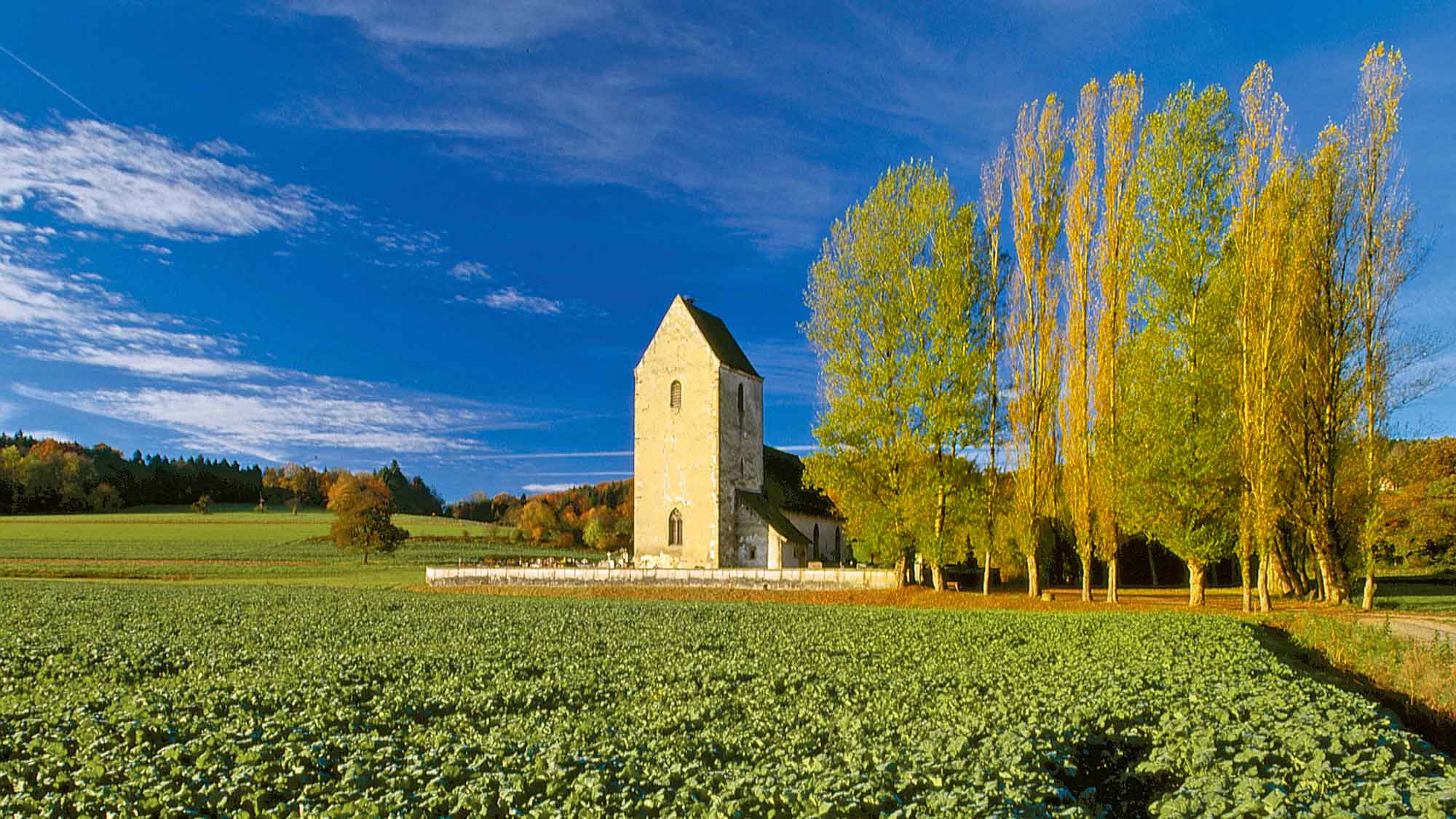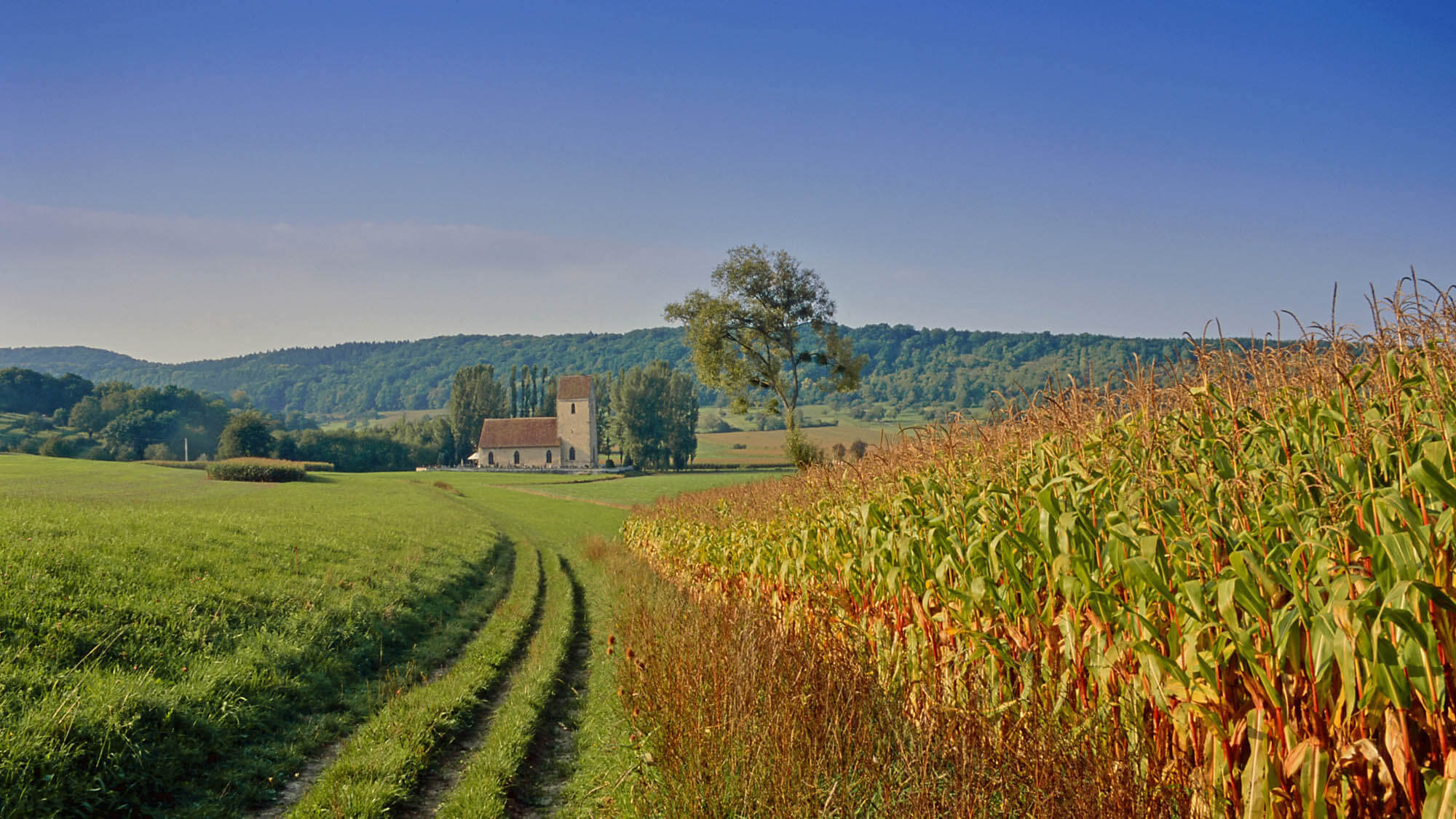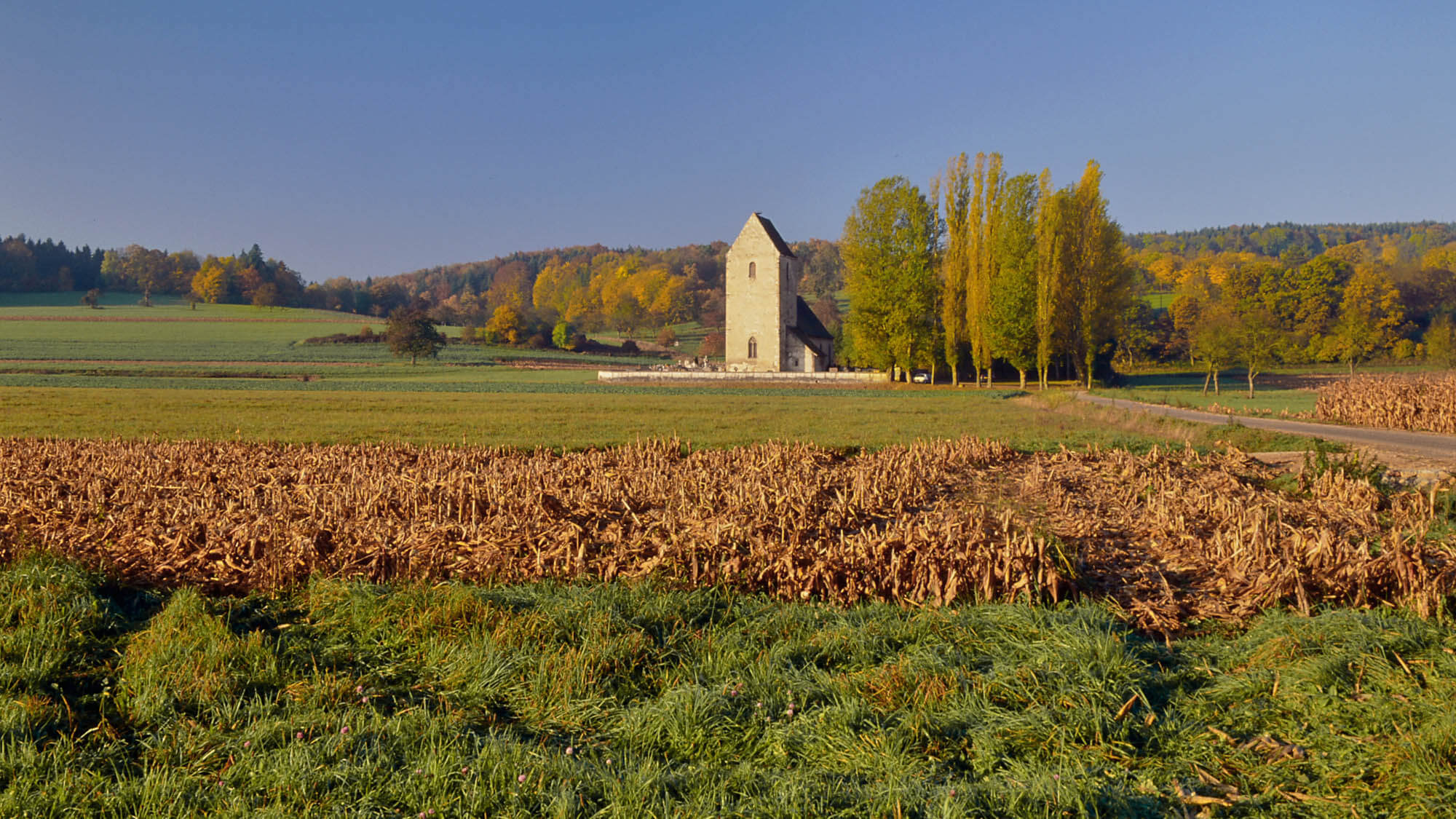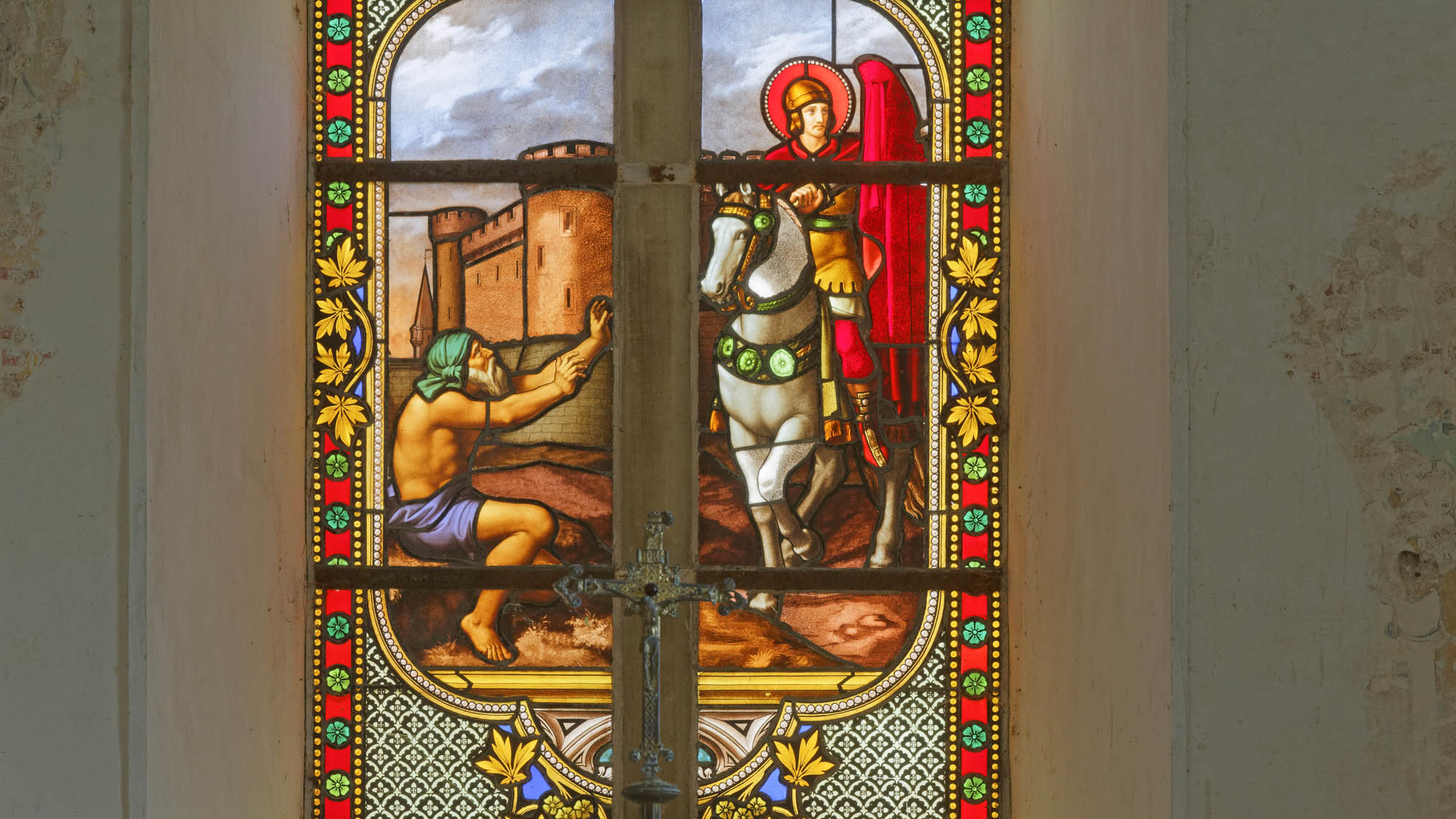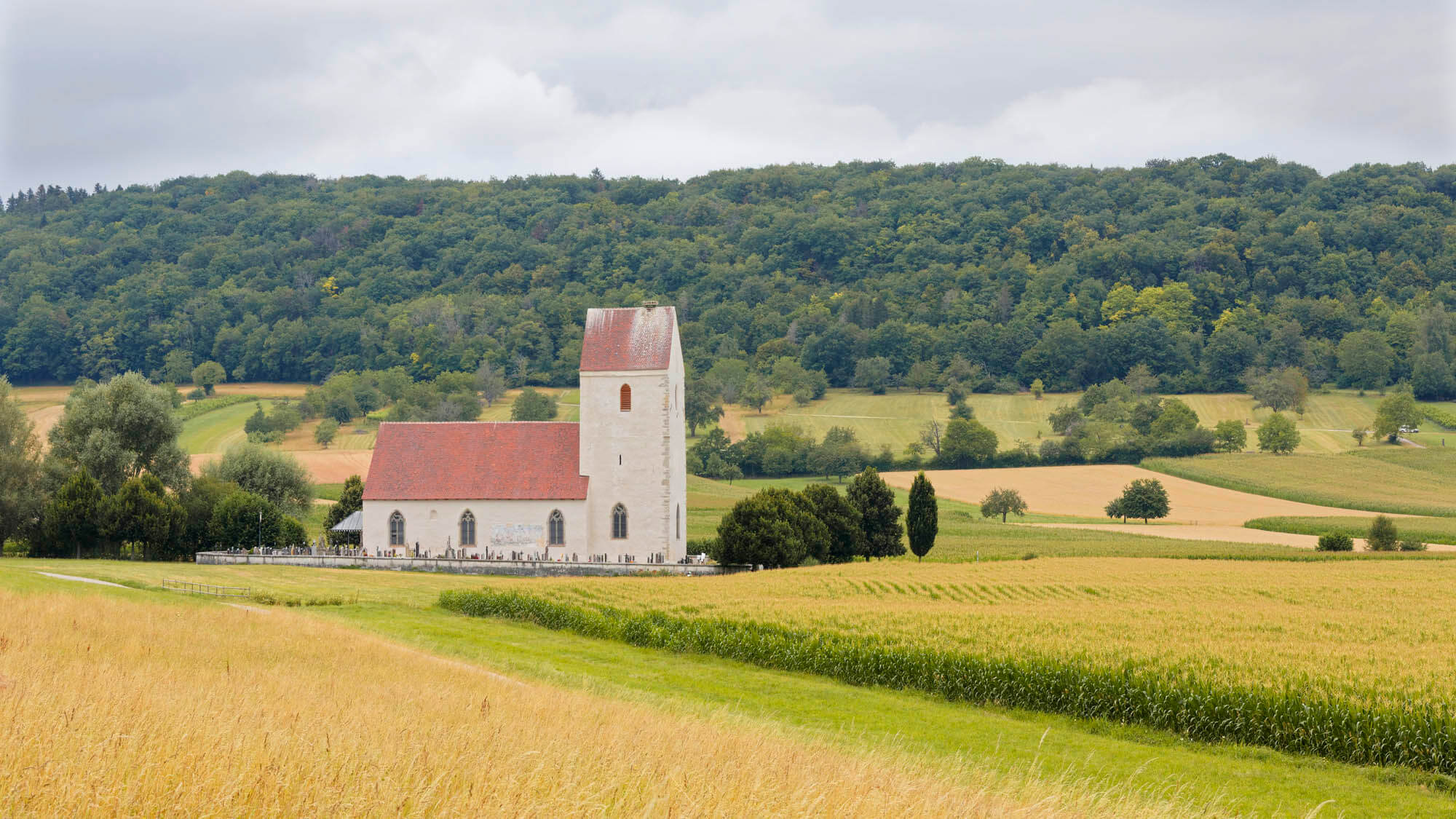The Chapel of St. Martin-in-the-Fields
St. Martin in the Fields lies, as the name suggests, in the middle of a field, around 500m south west of the village centre. Ancient myths tell of a town that once stood here. The late Gothic church, dedicate to St. Martin, has been the parish centre for the surrounding villages of Oltingue, Fislis, Huttingue and Lutter since Merowingischen or early Karolingischen times. It is also possibly the site of an earlier pre-Christian place of worship. Both prehistoric stone tools and Roman pottery, tiles and figures

